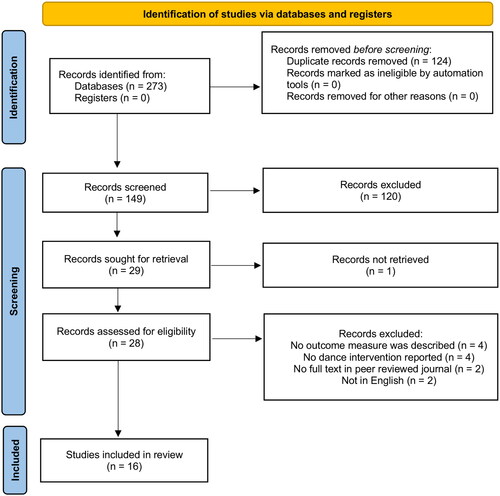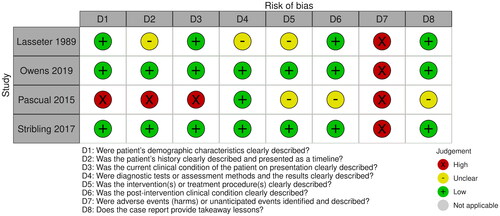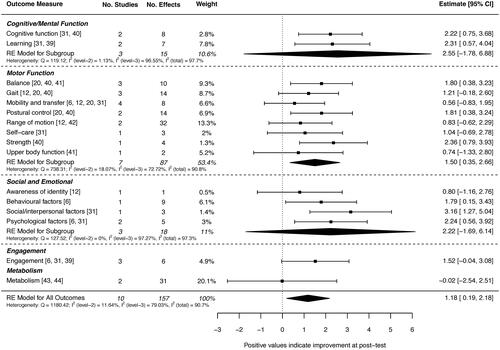Figures & data
Table 1. Summary of studies characteristics and proposed ICF codes.
Table 2. Studies mapped to the family of participation-related constructs (fPRC).
Table 3. Moderator analysis effect of dance type, dose, intensity, sample size and study design on outcomes effects size.




